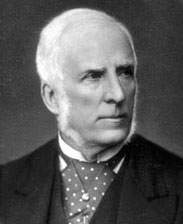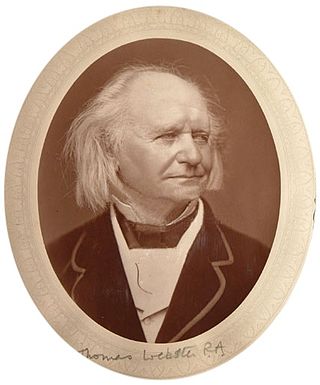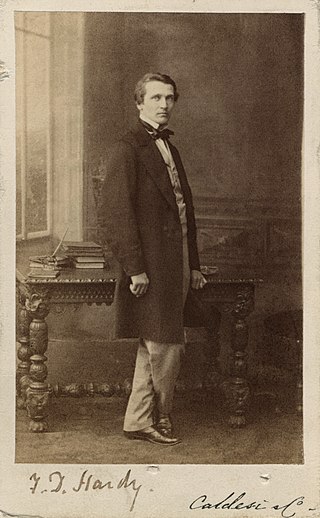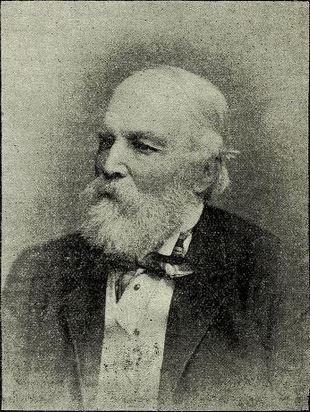
The Pre-Raphaelite Brotherhood was a group of English painters, poets, and art critics, founded in 1848 by William Holman Hunt, John Everett Millais, Dante Gabriel Rossetti, William Michael Rossetti, James Collinson, Frederic George Stephens and Thomas Woolner who formed a seven-member "Brotherhood" modelled in part on the Nazarene movement. The Brotherhood was only ever a loose association and their principles were shared by other artists of the time, including Ford Madox Brown, Arthur Hughes and Marie Spartali Stillman. Later followers of the principles of the Brotherhood included Edward Burne-Jones, William Morris and John William Waterhouse.

John Henry Twachtman was an American painter best known for his impressionist landscapes, though his painting style varied widely through his career. Art historians consider Twachtman's style of American Impressionism to be among the more personal and experimental of his generation. He was a member of "The Ten," a loosely-allied group of American artists dissatisfied with professional art organizations, who banded together in 1898 to exhibit their works as a stylistically unified group.

John Callcott Horsley RA was an English academic painter of genre and historical scenes, illustrator, and designer of the first Christmas card. He was a member of the artist's colony in Cranbrook.

Cranbrook is a town in the civil parish of Cranbrook and Sissinghurst, in the Weald of Kent in South East England. It lies roughly half-way between Maidstone and Hastings, about 38 miles (61 km) southeast of central London.

Wolverhampton Art Gallery is located in the City of Wolverhampton, in the West Midlands, United Kingdom. The building was funded and constructed by local contractor Philip Horsman (1825–1890), and built on land provided by the municipal authority. It opened in May 1884.

George Henry Boughton was an Anglo-American landscape and genre painter, illustrator and writer.

Thomas Webster, was a British painter of genre scenes of school and village life, many of which became popular through prints. He lived for many years at the artists' colony at Cranbrook in Kent.

Cranbrook School is a co-educational state funded boarding and day grammar school in the market town of Cranbrook, Kent, England.

Sophie Gengembre Anderson was a French-born British Victorian painter who was also active in America for extended periods. She specialised in genre paintings of children and women, typically in rural settings. She began her career as a lithographer and painter of portraits, collaborating with Walter Anderson on portraits of American Episcopal bishops. Her work, Elaine, was the first public collection purchase of a woman artist. Her painting No Walk Today was purchased for more than £1 million.

Pennsylvania Impressionism was an American Impressionist movement of the first half of the 20th century that was centered in and around Bucks County, Pennsylvania, particularly the town of New Hope. The movement is sometimes referred to as the "New Hope School" or the "Pennsylvania School" of landscape painting.
Frederick William Newton Whitehead was an English landscape artist and illustrator.

George Bernard O'Neill, was a prolific Irish genre painter, from 1859 a member of the Cranbrook Colony of artists.

Frederick Daniel Hardy was an English genre painter and member of the Cranbrook Colony of artists.

Augustus Edwin Mulready was an English genre painter whose work often depicted London street scenes with urchins and flower-sellers.

Robert Howlett was a British pioneering photographer whose pictures are widely exhibited in major galleries. Howlett produced portraits of Crimean War heroes, genre scenes and landscapes. His photographs include the iconic picture of Isambard Kingdom Brunel which was part of a commission by the London-based weekly newspaper Illustrated Times to document the construction of the world's largest steamship, the SS Great Eastern.

George Hardy (1822–1909) was an English genre painter, a member of the Cranbrook Colony and eldest brother of the artist Frederick Daniel Hardy.
Calcutt, Calcott or Callcott may refer to:

Heywood Hardy was a British artist, in particular an animal painter and painter of horse riding scenes. He also painted landscapes and portraits, especially equestrian portraits.

Lumb Stocks was a British engraver. In a long career he produced engravings from paintings by notable artists of the day.

James Hardy junior was a British artist, in particular a painter of sporting dogs and Scottish sporting pictures. He also painted genre scenes set in cottage interiors or the countryside.


















